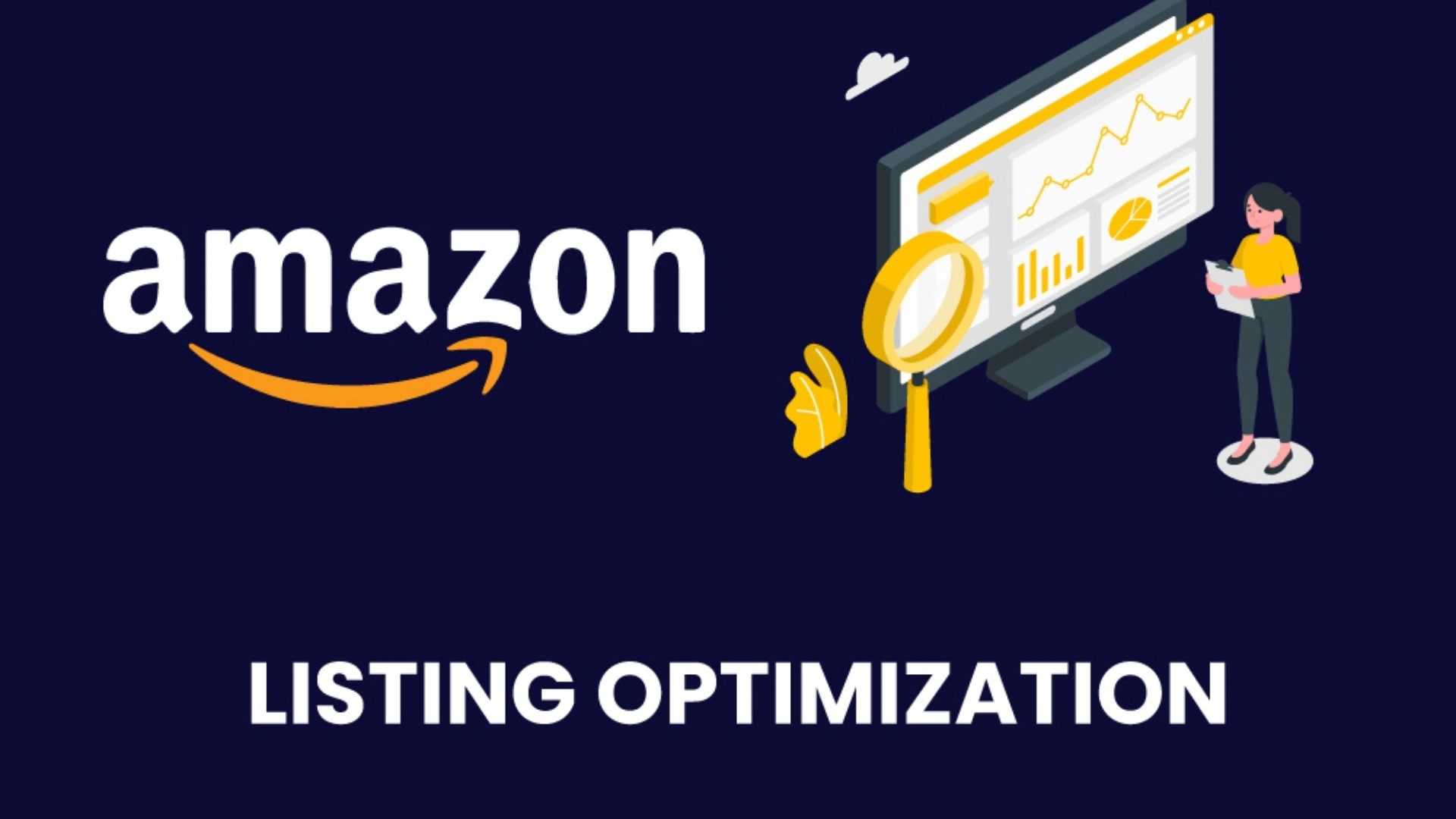Key Takeaway:
- A well-optimized Amazon listing increases visibility, trust, and sales.
- Add upcoming trends like voice search, AR images, and messages about sustainability.
- Keep testing, measuring, and improving to stay competitive.
Selling on Amazon is more competitive than ever. With over 2.4 million active sellers and more than 350 million products listed, getting noticed in search results is tough. This is where Amazon listing optimization comes into play. An optimized listing doesn’t just boost visibility in search—it has a direct impact on your click‑through rates (CTR), conversion rates (CR), and in the end, your revenue.
In this guide, we’ll dig into what Amazon listing optimization means, why it’s so important how to put best practices into action today, and what future trends sellers should get ready for.
What Is Amazon Listing Optimization?
Amazon listing optimization boils down to enhancing every part of your product detail page. This includes the title, bullet points, description, images A+ content, keywords, and backend data. The goal To:
- Boost your product’s position in SERP
- Help shoppers grasp your offer
- Build enough trust for them to make a purchase
Amazon’s search algorithm, A9 (and its newer versions), chooses which products to rank based on how relevant they are, their sales history, and the overall customer experience. A listing that’s well-optimized sends clear signals to A9 that your product matches what customers want.
Why Does Listing Optimization Matter So Much?
A 2024 Jungle Scout report reveals that 79% of Amazon sellers view SEO and listing optimization as their main focus. This makes sense: Amazon works like a search engine. Over 63% of online shoppers begin their product searches on Amazon instead of Google.
Here are some key facts that highlight the importance of optimization:
- The first page of Amazon results gets 75% of clicks.
- Listings with A+ Content can lead to 3–10% higher conversion rates on average.
- Products with top-notch images and video can see CTRs up to 80% higher.
You miss out on potential earnings if your listing lacks full optimization.
Key Elements of Amazon Listing Optimization
Let’s explore each part you need to focus on:
1. Product Title
Your title catches customers’ eyes first. A strong title:
- Includes main keywords
- Showcases the product’s top feature or advantage
- Reads (stay away from keyword cramming)
Example: Men’s T-shirt Cotton Casual Slim Fit Tee Crew Neck Short Sleeve Top
Slim Fit Men’s Cotton T-Shirt – Soft Crew Neck, Short Sleeve Casual Wear
2. Bullet Points
These give you a chance to make your case. Zero in on:
- Main features and advantages
- Issues your product fixes
- Keywords blended in
3. Product Description & A+ Content
Descriptions share your brand’s story and tackle potential concerns. A+ Content (for Brand Registered sellers) lets you add:
- Eye-catching images
- Side-by-side comparisons
- Real-life photos
- Your brand’s journey
Research shows that A+ Content can boost sales by up to 10% because buyers feel more confident when they see detailed info and better pictures.
4. Images & Videos
People grasp visuals quicker than words. Amazon gives you space for up to 7 images and, in many categories, video.
- Use pictures with high resolution (at least 1000px)
- Add shots showing lifestyle
- Display scale and how to use
- Include videos that explain where you can
5. Keywords for Backend
These hidden fields give Amazon more info about your product. Include:
- Words that mean the same thing
- Different ways to spell words
- Related terms not in your title or bullet points
Keep in mind, don’t overuse keywords; Amazon values different words that fit the product.
6. Prices & Reviews
Optimization goes beyond copywriting. Competitive pricing and positive reviews have an impact on ranking. Statista reports that over 90% of shoppers read reviews before buying. Ask satisfied customers to leave feedback and address negative reviews .
Advanced Optimization Techniques
Top sellers are taking extra steps:
- A/B Testing: Amazon Experiments (called Manage Your Experiments) allows you to test titles, images, and A+ Content to find what sells better.
- Using Sponsored Ads Data: Apply PPC data to uncover keywords that drive sales then add them to your listings.
- Localized Listings: When selling in multiple countries, adjust your content for local languages, cultural differences, and search behaviors.
Future Trends in Amazon Listing Optimization
The marketplace changes . Here’s what we can expect in 2025 and beyond:
1. AI‑Driven Listings
AI tools (including Amazon’s “AI-generated titles and bullets” beta) are becoming widespread. They look at top-performing listings and offer suggestions to improve. According to McKinsey, sellers who use AI to create content get products to market 20–30% faster.
2. Voice Search Optimization
As more people shop through Alexa, voice-friendly phrases gain importance. Listings that use natural, question-based keywords like “best eco-friendly water bottle” will match voice search patterns better.
3. Visual Search and AR
Amazon has an influence on augmented reality and image-based search. Sellers looking to the future are already adding:
- Images that show scale and context
- 3D models for specific product categories
Statista predicts that global AR commerce will grow to $36 billion by 2027, with Amazon expected to lead the way.
4. Sustainability and Trust Signals
Shoppers now care more about ethics. To boost sales, sellers can add sustainability claims (with certifications) in bullets or A+ Content. A recent Accenture survey found 72% of consumers like brands that are open about where they source products and how sustainable they are.
5. Deeper Personalization
Amazon is testing personalized search results. Listings that catch the eye of specific groups or showcase particular uses will have an advantage as algorithms become more detailed.
Common Mistakes to Avoid
Even seasoned sellers make errors. Watch out for:
- Cramming keywords: It makes reading harder and can lower click-through rates.
- Forgetting about mobile users: Over 65% of Amazon traffic comes from phones so make sure your titles and bullet points look good on small screens.
- Poor-quality images: Blurry or unclear pictures reduce trust.
- Overlooking backend data: Many sellers leave these fields empty, missing chances to use keywords.
Step-by-Step Checklist to Improve
Here’s a quick plan of action:
- Use tools like Helium 10 or Jungle Scout to find keywords that sell well
- Make a title with less than 200 characters and put your main keyword near the start
- Create 5 bullet points that show how your product helps customers, not just what it does
- Design attractive A+ Content with photos of people using your product and charts that compare it to others
- Include at least 5–7 pictures, with the main one having a white background
- Add a video of your product if you can
- Put related words in the backend keyword boxes
- Keep an eye on PPC info to discover and improve your keywords
- Get and handle reviews to show that people like your product
- Try different things and make changes often with Amazon Experiments
Final Thoughts
Optimizing Amazon listings is an ongoing job, not a one-time task. As competition grows, sellers who put money into quality content, keyword research based on data, and upcoming trends will get the buy box more often.
The future looks bright. From listings created by AI to shopping experiences powered by AR, staying on top of these trends can give your business a big advantage. Start to optimize now, keep learning, and your Amazon presence will grow along with the platform.
Also Read :
How to Choose an SEO Company in 8 Steps in 2025











